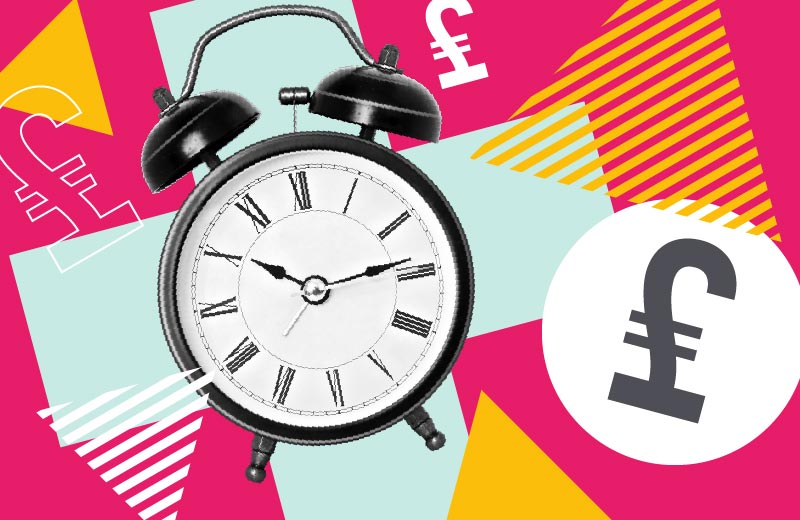

But what is branding and what is a brand?
They're not words made up by marketeers and designers to make ourselves sound more important! They're not the same thing and a brand isn't just a logo. It's a lot more than that.
Your brand is what your company promises when people buy your product or service. Based on that promise, your customers will develop expectations of your business. Your brand has a personality and your brand is how people perceive your company.
Divine Chocolate are a good example of a strong brand. I would say they promise luxurious, delicious chocolate created from responsibly sourced ingredients by workers who treated well. Their brand persona is premium, human and ethical. I expect to pay more for Divine than other brands because this allows them to select only the best ingredients with a clear conscience and pay everyone a fair wage. I therefore feel good about buying Divine as a gift for my very ethically aware sister. I perceive them as being an honest, trust worthy enterprise because as far as I'm aware, everything they have promised regarding helping to end exploitation in the chocolate industry and responsible sourcing is correct and I have enjoyed their chocolate.
Their brand works for me because I feel they have delivered on what they have promised. If I had not enjoyed the taste of their chocolate or found out that the ingredients weren't as responsibly sourced as I'd been lead to believe in their brand promise, my trust would be broken and I might consider buying chocolate from another brand. What their brand represents is the same as what they deliver.


The script typeface in Divine Chocolate's logo, metallic gold and clean layouts give a premium feel, while the variant-specific hand created patterns give a human touch to represent the brand's ethical credentials.
The other part of your brand is the brand elements or branding. Unlike the other parts of the brand, this part is tangible. It's the channel of communication for your brand's promise. It defines your brand's personality, sets brand expectations and helps shape brand perceptions. Branding is how your brand it is communicated to your customers.
Your branding is
- your advertising
- your website
- your stationery
- your leaflets, posters and brochures
- your pull up, pop up stands and exhibition graphics
- your packaging
- your vehicle livery
- your uniforms / clothing
- at your company premises through your signage and wayfinding etc
- on the phone, on email, on social media and in person with you and your staff
- ANYWHERE your audience and customers have contact with you
Branding is delivered on each of those platforms with one or more of these:
- name
- logo
- fonts,
- colours,
- strapline
- image style — photography or illustration or both,
- graphic elements such as patterns, stripes, icons etc.
- tone of voice
Much of that is visual branding, which is what a graphic designer such as myself works with. At Bifrost we have colleagues in other disciplines such photography and copywriting who can support you with all other aspects of branding too.

Why does branding matter to your business?
Clearly, you don't want your brand to promise something your company won't deliver. Customer trust is key in getting sales so you want to make sure your branding correctly promises what customers can expect when they engage with and buy from you. Conversely and just as importantly - you may have a fantastic product or service but if what you do isn't effectively communicated to the right people, you could be missing out on sales opportunities.
Good branding should be doing 3 key things:
-
Good branding is targeted.
It helps you win business by saying the right thing to the right audience. Don't try to be all things to all people because your message will be compromised and appear weak or confusing. Aiming your communications directly at your key target audience will be clearer and much more likely to yield positive results.
-
Good branding is consistent.
For example, your logo should look the same, your colours should always be the same etc. Consistent branding shows you are professional and will deliver a consistently good service, therefore building trust and making people more likely to buy from you.
-
Good branding is individual.
It helps you stand out from your competitors by showing what is different about you and why people should do business with you.
- What is it that makes you different?
- Is it your experience or qualifications?
- Specialism?
- Cost?
- The way you do business / personality?
It's worth bearing in mind that branding should be reviewed from time to time.
-
Your target audience may have changed.
Your business may have evolved to work with different people than you'd originally set out to work with or you may have changed your services or products.
-
It can become inconsistent.
Your branding may have never been consistent in the first place or it can happen as a result of different people working on it. Branding can lose focus over time if there isn't a strong vision for it in place and as a result it can go off on a tangent.
-
Branding can become dated or need refreshing.
Even the big, global brands refresh or rebrand periodically. Coca-Cola's basic logo hasn't changed dramatically in a long, long time but they have tweaked the shade of red, added other graphic elements such as the wave and altered the shape of the bottle, for example. Their advertising has changed — the images and tone of voice they used 10, 20, 50 years ago worked then but doesn't now. Airbnb and Apple are examples of brands who have changed their logos more radically and the rest of their visual branding to match. A refresh or rebrand shows you're forward thinking and helps build trust with your audience. It can also be a marketing or PR opportunity.
-
Don't leave it too long.
It could be costing you business by sending the wrong messages and attracting the wrong customers. You and your customers may become overly attached to the old, inconsistent or ineffective branding. That then makes it harder to make an effective change.

How can you create your branding?
-
You can do it yourself.
-
Or you can ask a good graphic designer, agency or creative collective to do it for you.
A good creative outfit should be experienced, include people you get on with and those people should understand you and your brand. They should also:
-
Save you time, meaning you can get on with your business.
-
Save you hassle. Working with a professional creative firm means they can do everything from setting up the artwork up in the correct format for print to working with trusted professionals in fields related to design such as web development, photography, copywriting, marketing and PR. They should be able to assist you with all aspects of your branding.
-
Draw on their experience to create something right for you and your business. Branding is what they know, what they've been trained in and what they do every day. Why not let an expert do the hard work for you?
-

In conclusion
- Your brand is what your company promises, it has a persona, how it is perceived and what customers expect. Your brand should represent what you do and how you do it.
- Branding is how the brand is communicated to your customers.
- Good branding will help establish and grow your brand, encouraging sales.
- Review your branding regularly to ensure it is working for you.
A partnership made in heaven?
Feeling inspired? We'd love to help! We are a team of collaborators that enjoy nothing more than partnering with ambitious clients. Get in touch if you'd like to talk through your next project or get some advice.



